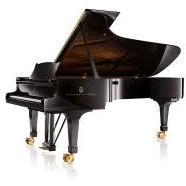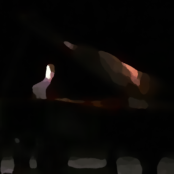Leaderboard
Popular Content
Showing content with the highest reputation on 11/09/2017 in all areas
-
Here is a piece I hope to compliment with two more pieces for a more complete sonata -- this is only the first movement. I've spent a while working on making my writing more concise for chamber settings, and once I actually write this whole piece, I plan on getting it performed and recorded. A large focus on this piece is varying textures and moods efficiently, as well as using the different motifs and melodic fragments to construct the music, concerning myself less with harmonic relationships etc. I've included a score in concert pitch, as well. Suggestions are helpful, and thanks! P.S. I attached a poem by William Carlos Williams, which helped me start the piece P.P.S. I appreciate all the comments, especially on the difficulty of the piano part, and when I finally incorporate this piece into a full sonata, I might re-evaluate certain places. The feedback helps a ton!1 point
-
8 Pieces for Solo Piano 1. Prelude 2. March 3. Minuet 4. Dance 5. Ecossais 6. Gavotte 7. Allegro 8. Rondo Sorry, they're all separate files1 point
-
Hey people! I just want to share my recent work for percussion, electric guitar, electronic sounds and live electronics! Hope you like it! thanks!1 point
-
Second Part m. 19: I would advise against an "8" here, as the melody features the third, not the octave. "" - "6" - "" m. 20: There is an unprepared seventh there: <c> in the melody against <d> in the bass. And it doesn't resolve down, but up to <d>, which itself is an unprepared dissonance against <a> in the bass. I would recommend changing the bass line to <a> - <e> - <d> or a variant thereof, which would be ii - IV6 - V7 in G Major. This would need "" - "6" - "#", with the <c> over <d> explained away as a retardatio, i.e. a note that should move a second up but does it too late. Your original bass line could be seen as a special expressive device - baroque composers in fact loved dissonances as a "rhetorical figure" -, but it would be more in place in a mournful, sad piece, not in a rather pleasant sonata. m. 21: If you want, you could make the cadence stronger by replacing the half cadence on d with a major cadence, by changing the bass line and writing the quavers <h> and <c#> instead of the crotchet <g>. However, it would destroy the rhyme with the bass line of m. 19. So, just a suggestion. m. 22 : "#" - "-" - "6" / "6" m. 22 to m. 23: The resolution of the Seventh in m. 22 by a jump to in an open fifth with the bass in parallel motion is rather harsh, even if the discant jump is just an octave transposition. One solution: Shorten the <d> in measure 22 to a quaver, let it precede by rest, transpose it up an octave. Then: "" - "#" - "7" . Second, even better solution: Use the parallelism to m. 24/25. Thus, end m. 22 with the quavers <h c> in the discant and a <g> in the bass, to which the <f#> is pointing anyways. Figuring: a simple "". m. 23: "" - "#" - "7 #", as you need the seventh for the <c> in the discant. If you want to give it a stronger cadential feeling, like in a Monte, you could shange the bass line to end on <f#> (figuring: "6 5") and have a <g> (figuring: "") in m. 24, and the following two bass notes shifted accordingly. (#6 is normally written as a "6" with a slash through the arc, but I cannot type it.) m. 24: I guess you wanted to include the melodic <c> in the bass and therefore opted for a "6 4" on the bass <g>. However, this would imply <c e> in the right hand, which is fine with an <a> in the bass. So, I would propose to change the bass note to <a> and sharpen the <c>, giving the feel of A major. Thus, the figuring with my proposed changes would be "" - "6" - "#" for a bass line of <g a h a>, with the first two notes being quavers, the rest crotchets. For your original bass line, I would prefer "6" - "6 4" - "" and treat the <c> as passing dissonance. This also helps with fitting in your proposed "6 4". However, for more harmonic variety, a "6" - "6" - "" would fit as well. m. 25: The bass here should be a transposition of the one in m. 23, like the discant. Thus, you either have <e d> as the last two quavers, or something ending on <g#> if you changed the bass line in m. 23 to end on <f#>. If its <e d>, the figuring would be "#" - "5# 3#" - "7 #". The <es> in the discant should be reinterpreted as <d#>. Your original bass would suggest "#" - "5# 3#" - "#", so just like you have written, except for a "#" instead of "6 4". m. 26: Again, I would write an <a> in the bass to strengthen the cadential effect, so the quavers <a h c# d> would result in "" - "6" as figuring. m. 27: Just erase the "4", the rest is fine. m. 28: Just replace "8" with "7". m. 29: "" - "6" - "" , so just shift the "6" one quaver to the left. m. 30: Again, you go in parallel from a fifth into a tritone, which is no problem in itself, just for the voice-leading of the inner voices, especially to the following sixth chord. You probably aimed for something like a motivo di cadenza. I would suggest another bass line, outlining: <g> - <f> - <e> (which can be embellished), and the figuring "" - "6" - "6 5". Retaining your bass, I would suggest "" - "" - "6 4 2", so just "" instead of "8". m. 32: "" / "6 5"- "" / "9" - "8" / "7" - I think following the melodic descent could be a good choice. The chords mainly move in crotchets with a discant voice in quavers. m. 34: "6" - "6" - "" or "6" - "6" / "" - "". I would work out the voices of this measure to decide whether a "7" on the last <g> is a good option. I probably introduced some mistakes of my own making, so please don’t hesitate to ask any questions or for clarifications, @Maarten Bauer.1 point
-
Sorry that it took me longer than expected to come around and study the score. Now some general remarks: First, as you are the composer, your figured bass is of course always correct if it conveys what you intended. So, take my remarks with that in mind. I just give some comments on how I think a baroque composer could have written a figured bass for your Adagio. However, there is rarely just one solution how to do this. The figured bass follows generally the pulse of the piece. In your case, this seems to be every crotchet, so normally, the chords would not be changed with every quaver (like it seems to be intended in m. 2) except it is expressly noted. Also, there are two schools of thought regarding writing figured bass. One assumes that normally, everything follows the regola d’ottava, and only exceptions to this are noted. (Or sometimes nothing because an experienced player knows what to do.) The other one, far more common, assumes that an unfigured bass always takes a chord in root position. I assumed you intended the second interpretation. In any case, a player is free to add elements of the melody or elements of imitation to a realisation of a figured bass; therefore, the figures can be really bare-bones, a bit like guitar chords and don't have to reflect every change in the melody. In the following text, "" encloses a bass figure, and <> encloses notes. "" / "" means that on one beat, I would write the first figure and then to the right of it the second one. (Typically one for the first quaver and one for the second quaver.) Measures where I have nothing to comment on are not mentioned. First part m.2: I would shift the "6" to the third quaver <a>, so that harmonically you get I - IV6 - I . The chords would be in crotchets. m.3: The first figure could be an 8, if the chords should outline the melody. I would get rid of the 8 on the second beat, as it implieds a <g b d g>, but the melody goes up to <d>. A good continuo player would probably prefer <g g b d>, which is also contrapuntal impeccable. The next chord would be <b g d f> with a tritone following a fifth, which is allowed ("rein - vermindert, ungehindert"). m. 4: The "6 4" on a dominant would typically be reserved for cadential progressions and be followed by a dominant chord. You could as well let it be a dominant - the progression to m. 5 with its VI would be more logical. m. 5: You could explicitely write a "5 3" under the first <a> to avoid someone following the regola d’ottava and playing a sixth chord, but is not necessary. The "8" should be an "8 6", as <h> demands a sixth chord and certainly not a diminished chord in root position which would be very atypical for a baroque sonata. m. 6: Just a long line after the second bass note so no one will play a IV6 or VI chord on the <a>, except this is what you intend. m. 8: Why a "6 4"? This would imply <d h g> which would go against the <f> in the melody. You probably want either ii <d f a> or vii6 <d f h> leading to <a c f>. I see three solutions: In m.8, it could make sense to figure the chords as "6" - "-" - "6" - "6", and nothing under the <c>. One shouldn’t micromanage the player ;-) So, you have <h d f> in the right hand on the first quaver, let it stand there on the second quaver, have <a c f> on the third quaver and <g d g> on the fourth (the parallel quint in the inner voices is not problematic) and reach <g c e> on the tonic. However, it is also possible to still follow a three-beat-pulse and just figure "6" - "6" / "2 5 7" -"". That would bring forth the following right hand: <b d f> - <a c f> / <f a d> - <g c e>. Or, you could as well see the <a> in the bass as mere passing note and focus harmonically on the g and h, so have "6" - "6 4 2" - "". <b d f> - <b d f> - <g c e>. Probably a fine and simple solution. m. 9: A simple "#" suffices to show that the third is to be sharpened. It should be followed by a "7", otherwise you don't reflect the important <f> in the accompaniment. m. 10: The simplest way would be ""-""-"6". A more sophisticated figuration would take the upper melody into account: "" / "2" - "" / 7 - "6" / "5" , where the main chord tones would be crotchets, but the highest notes reflect the melody in quavers. The second quaver <d> has of course to resolve to a <c>, but another voice may jump up to deliver the high <g> descending to <f>. m. 11: As the melody has a <c#>, I would not recommend to write an explicit "8"; a "#" is necessary, however, so that nobody plays <a c e> against a <c#> in the melody. If your intention was V - vii - V of d minor, a figuration of "#" - "" - "7" would be fine. The seventh on <a> is unprepared, but wonderfully resolved in the next measure. (<f> with an appoggiatura.) Due to this being part of a Fonte, I would prefer interpreting it as V V6 V7, so "#" - "6" - "7", as you cannot employ a vii-chord in root position in a major key. m. 12: The suspension on the third beat could be shown in the figured bass: "" - "-" - "9" / "8" m. 13: See m. 11, so "" - "6" - "7" m. 14: See m.12, so "" - "-" - "9" / "8" m. 15: Either like you did, or "" - "6" - "" m. 16: "#3 4" is rarely seen and does not fit the melody. You could just ignore the passing dissonance and write "#" - a good player would just interpolate the passing note. As the <e> is no suspension, a "4" / "#3" -combination would sound odd in this context. The <f#> should carry a "6". m. 17: This is cadential bar with a fairly straight forward I - IV - V progression. No need for figures except for a "#" under <d> to imply the leading tone. Especially the "4 2" should be avoided, as it would normally mean <e g h> in the right hand over <d> in the bass.1 point
-
I'll tell you what, this piece is so catchy! It's still going round my head just now! Well done again!1 point
-
I understand Strauss’ point. A string quartet is a rather ambitious way to write in four parts, as everyone of the four individual players expects a somewhat interesting part. You don’t get away with writing an interesting melody and bass line and filling in the harmonies. You really have to consider all four voices, or no quartet will play your piece. However, if you have mastered writing interesting string quartets (which i cannot do), you can easily write orchestral pieces. Yes, they have more voices, but rarely more than four really independent ones. Ok, if you go for the full Romantic orchestra - but that is another step.1 point
-
Perhaps we could all work on a piece based on one theme, and we could all write different parts to it?1 point



